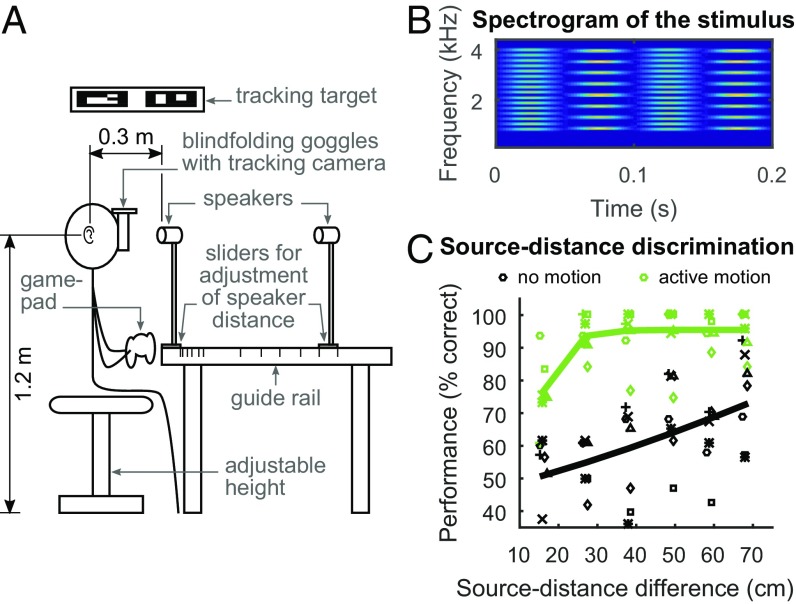Fig. 1.
Illustration of the experimental setup (A), the stimuli (B), and psychophysical results (C) to demonstrate auditory motion parallax in Exp. I. (A) Subjects were seated with their interaural axis exactly perpendicular to the axis of two miniature broadband loudspeakers. One randomly chosen speaker emitted the high-pitched sound, the other speaker emitted the low-pitched sound. Head motion in each trial was continuously recorded with a head-tracking system consisting of a tracking camera on the subjects’ heads and a tracking target at the ceiling. (B) Spectrogram of a 0.2-s section of the intermittent low- and high-pitched stimulation in each trial. The two different pitches are presented by the two speakers at different depths. (C) Individual performances (marked by different symbols) and sigmoidal fit to average performance (solid lines) with motion (green) and without motion (black). The data show that with motion, subjects discriminate sound-source distances overall quite well, whereas performance hardly deviated from chance level without motion.

